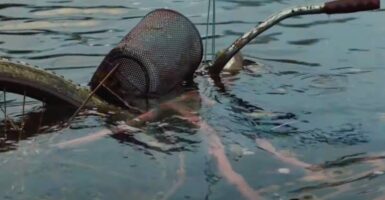A Helicopter Just Flew On Mars, See The Video
NASA has flown a helicopter on Mars. Watch the video.
This article is more than 2 years old
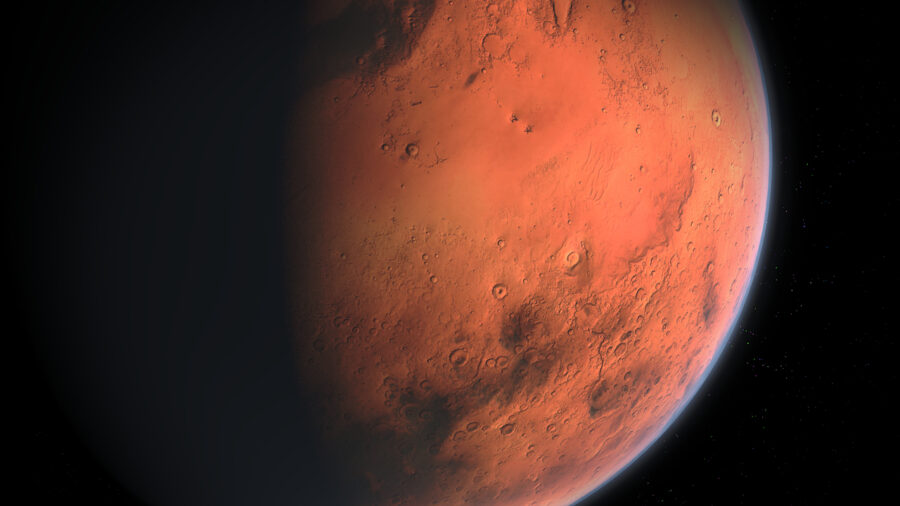
This, folks, is a big deal. NASA has just flown a helicopter drone, named Ingenuity, on the red planet of Mars. This feat, which NASA rightfully celebrated, represents the very first powered and controlled flight by an aircraft on a world not called Earth.
The confirmation, which was watched by members of NASA’s Jet Propulsion Lab (JPL) in Pasadena, California, was relayed to the onlookers via a satellite on Mars. The maiden flight lasted around 40 seconds and was met with sheer glee when the video found its way back to Earth.
You can check out the amazing footage of Ingenuity below.
“We can now say that human beings have flown a rotorcraft on another planet,” said a happy MiMi Aung, project manager for Ingenuity at NASA’s JPL. “We’ve been talking for so long about our ‘Wright Brothers moment’ on Mars, and here it is.” Of course, Aung is referring to the Wright Brothers, Orville and Wilbur, the two American aviation pioneers who are credited with inventing, then building, and finally flying the very first successful motor-operated airplane. To make this initial flight even more special, Ingenuity carries with it a small piece of fabric taken from one of the wings of Flyer 1, which was the aircraft that made the historic flight some 117 years ago in Kitty Hawk, North Carolina.
As the images of Ingenuity returned to the JPL, the uproar began with Aung yelling in the background, “It’s real!” While her colleagues were cheering, Aung tore up her contingency speech she had prepared on the off chance that Ingenuity was unable to get airborne. While the first flight lasted a short 40 seconds, those at the JPL and in charge of Ingenuity’s calendar promise much more adventure from the tiny drone in the days to come.
Just to get Ingenuity to Mars, the drone had to ride inside the belly of NASA’s Perseverance Rover, which now calls the Jezero Crater home, as it landed on the Red Planet in February. But that was the easy part. The more difficult portion was to come.
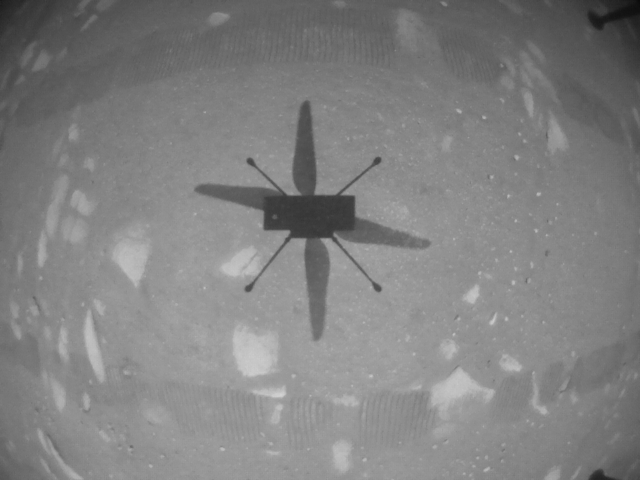
While landing Rover’s and such on the Red Planet can be tricky at best, trying to get something as small as a drone off the ground is a whole different ballgame. Mars atmosphere is a mere 1% the density we find here on Earth, which doesn’t give the blades of Ingenuity much assistance when trying to get lift off the ground. The lower gravity of Mars helps, but in general, it takes a lot of effort to get the drone airborne.
To help in this effort, Ingenuity’s designers made it extremely light. It was also given immense power (peaking at 350 watts) in order to turn the drone’s blades as fast as possible – 2,500 revolutions per minute.
Then there was the issue of controlling Ingenuity. Just how does one maneuver the small drone from nearly 181 million miles away? Using a joystick is impossible. So, JPL had to rely on radio signals, which over that vast distance, takes a bit of time. But it worked and Aung had little doubt.
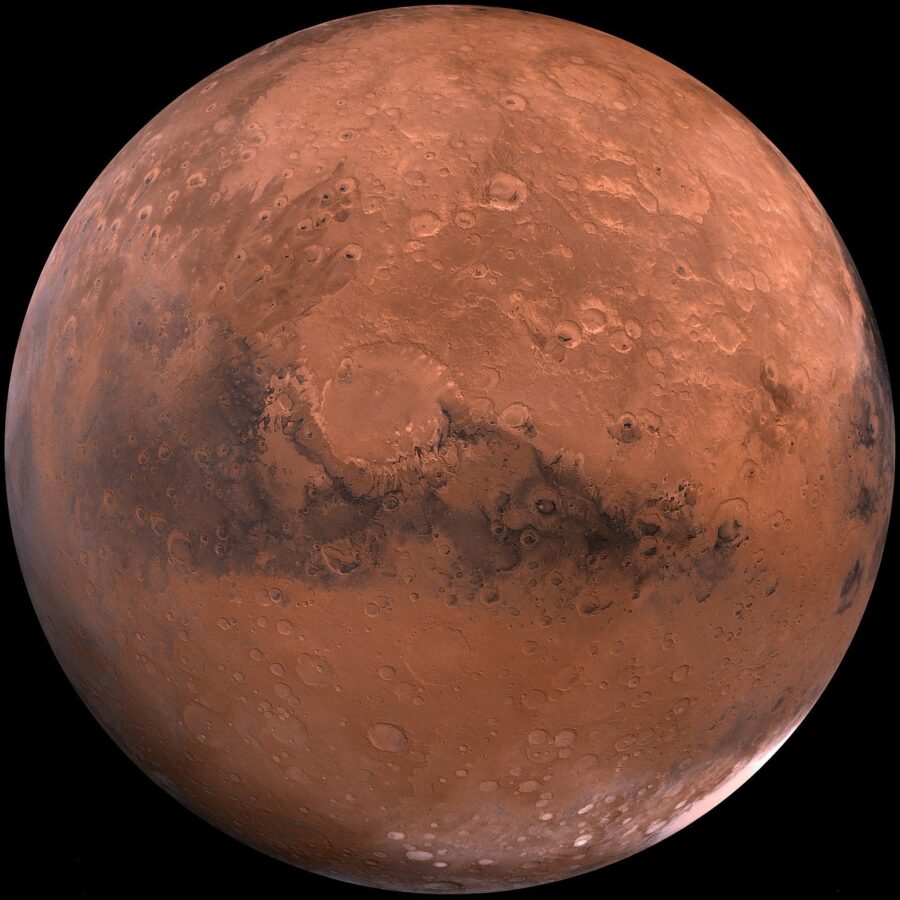
When presented with the question of whether she was surprised the flight was a success, Aung told BBC News, “No, I’m not. We really had nailed the equations, the models, and the verification here on Earth in our laboratory tests. So, it then became a question of: have we chosen the right materials to build Ingenuity, to survive the space environment, to survive the Mars environment? We’ve gone from ‘theory says you can’ to really now having done it. It’s a major first for the human race.”
To gain different perspectives, Ingenuity has been equipped with two separate cameras. A black and white camera points to the ground, allowing the drone to use it for navigation, and a high-resolution color camera that allows Ingenuity to look out over the Red Planet’s horizon.
With the successful launching of Ingenuity, NASA has announced that the airstrip inside Jezero where Perseverance dropped off Ingenuity will not be known as “Wright Brother’s Field.” Not only that, but the United Nations civil aviation agency, the International Civil Aviation Organization, has given NASA and the US Federal Aviation Administration an official ICAO designator: IGY.

Ingenuity’s chief pilot, Håvard Grip, explained via BBC News, “India Golf Yankee, with the call sign ‘Ingenuity’, and those details will be officially included in the next edition of ICAO’s designators for aircraft, operating agencies, aeronautical authorities, and services.”
With their first successful voyage now under its belt, the JPL has four more scheduled flights in the coming days. The first is slated to go as early as Thursday, and each succeeding flight is planned to build on what Ingenuity has done previously. “What we’re talking about here is going higher, going further, going faster, stretching the capabilities of the helicopter in those ways,” Grip said.
Head of Science at Nasa, Dr. Thomas Zurbuchen, agreed, “We’re putting the pedal down and going for it.”
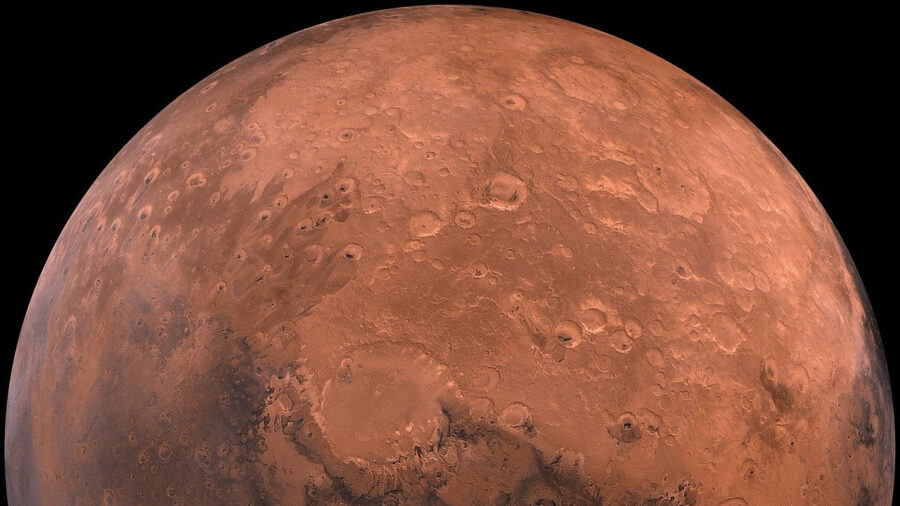
The goal of the Ingenuity mission is to allow scientists to study how we could further explore distant worlds, especially Mars, by sending men and women to the Red Planet as the ultimate goal. They would like to use these drones to scout ahead for future rover visits and to help plan when it is time for astronauts to make that trek.
Don’t think NASA’s plans are strictly centered around the Red Planet. No, NASA has already approved another drone mission, this one to Titan, the big moon of Saturn. The mission is called Dragonfly and should be much easier to fly as the atmosphere on Titan is much thicker than what’s found on Mars. They expect Dragonfly to fly when it’s scheduled to arrive on Titan in the mid-2030s.

